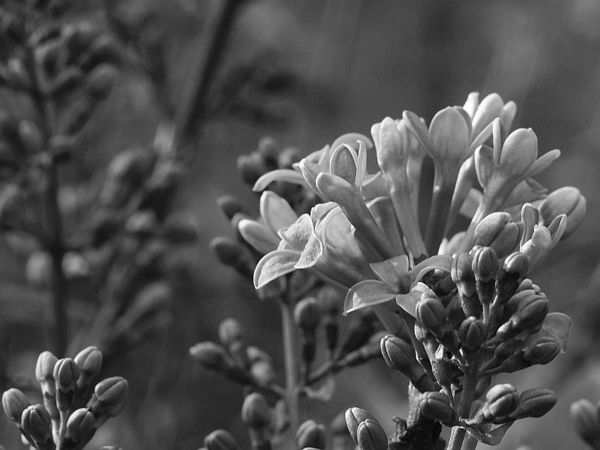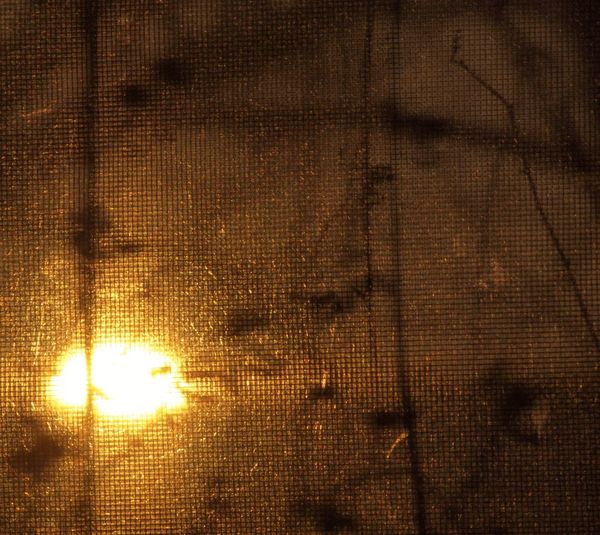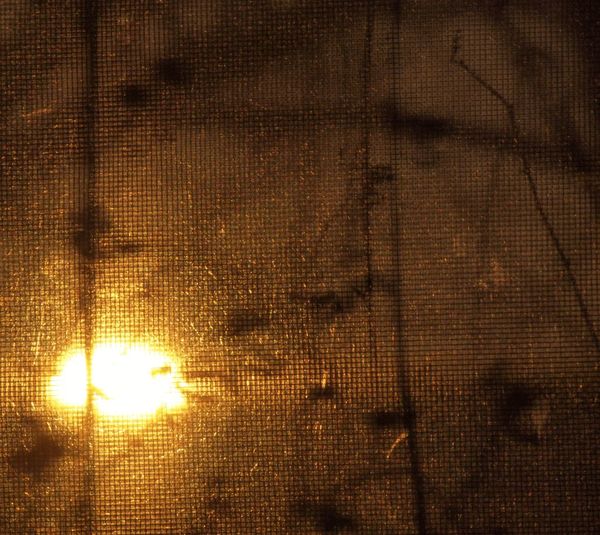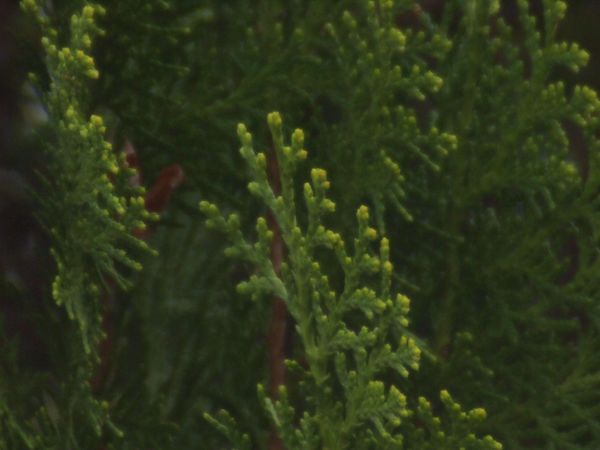Posts for: alfeng
Jun 4, 2018 12:51:48 #
dparenton wrote:
She was most probably hoping that you would shoot the wedding for nothing as your wedding gift to her! Go as a guest and friend. If possible take a small camera with you. Take a lot of informal, unposed pictures. Surprise her with a small album at a later date.


May 30, 2018 13:24:21 #
cwp3420 wrote:
Have any of you folks heard of Meyer-Optik filters and have an opinion on them? I know I could buy it from Adorama and return it if I don't like it, but I would prefer to do it right the first time. Thanks for everyone's input. I did a search on here for Meyer-Optik but nothing comes up.
FWIW ...
Meyer-Optik LENSES were in the second tier of German FILM lenses behind Leitz & Zeiss (and of course, Meyer-Optiik lenses are not as good as post-War 'Aus Jena' Zeiss-formulated lenses) ...
What difference are you hoping for with a different brand of Polarizing filter than the ones which you have?
May 26, 2018 11:53:45 #
MRHooker2u wrote:
I recently inherited a Nikon F film camera with fo... (show quote)
If you want to use those excellent manual focus lenses without worrying about conflicts-or-conversions, then you can use them on any number of MIRRORLESS camera bodies with a relatively inexpensive (if bought on eBay directly from China) adapter ...
For a full frame sensor, SONY is apparently the only available choice at the moment.
For a smaller sensor (APS-C or m4/3) you have many excellent choices.
Let your budget and sensor size be the determinant ...
... While an EVF is not necessary for a mirrorless camera, having one is better than not having one.
Some people strongly prefer reflex viewing & disdain EVF viewing; and, there are definitely advantages to a DSLR over a mirrorless camera body, but an EVF has many advantages of its own; so, choosing between the two is up to the individual.
May 4, 2018 21:30:03 #
Marg wrote:
I received my very first camera at age 67. It’s a pre owned Canon t4i. I have 2 kit lenses (18-55 mm and 75-300 mm.) Following unsolicited advice from a number of people I have added a 50 mm f1.8 prime lens. I feel that I have already outgrown the kit lenses and it has been suggested that I save up for an L lens. Do you all concur or disagree. I shoot birds, architectural landscapes, flowers and grandkids. I have not yet found my photography passion. Thanks in advance for any thoughts.
Marg
Marg
I think that you may be having what others refer to as a G.A.S. attack ...
Nothing wrong with that.
As you know, different focal length lenses will result in a different field of view ...
... So, is your current 75mm-300mm inadequate for the nature shots you want to make?
... Does the 18mm-55mm work for your pictures of your grandkids and/or architectural images?
... Do any-or-all-or-none of the lenses you allow you to easily capture the flower pictures which you want?
One thing you can do is to assess the convenience-and/or-handicap of using a fixed focal length lens vs. the 18mm-55mm Zoom lens you have ...
... I personally think that it is more-than-okay to use multiple PRIME lenses rather than to use a single Zoom lenses ...
... In part because when I tend to use a Zoom lens it is typically at one extreme of its range or the other so for me the zoom function is wasted!
BTW. Having-and-using a REASONABLY GOOD tripod may go a long way toward sharpening your images ...
... Also, you need to be aware that some cameras have a slightly longer lag between when the shutter button is pressed and the image is actually captured and you may not be allowing for the slight lag in time between when you press the shutter release and the camera goes through its auto-this-and-that process ...
BTW2. Presuming that your 50mm lens is not a "macro" lens, you may want to consider a set of coupled extension tubes to use with any-or-all of your lenses to see if being able to focus a little closer on some objects (e.g., flowers) satisfies some of your image capturing needs ...
... Because being able to make moderate close-ups of the flowers you will be photographing in the future OR being able to get a little closer to other objects with your longer Zoom lens may help capture the images you want and/or to help you to realize-or-decide what capabilities you want for your next lens(es).
Extension tubes do not have to cost a lot of money if you get them via eBay.
Apr 29, 2018 18:37:46 #
Pat F 4119 wrote:
As my photography education progresses, I am begin... (show quote)
FWIW ...
While switching from an m4/3 camera body to a Full Frame Sony could have some merits, I think you need to understand that for what you have specified it may be a matter of the lens(es) you are using ...
I think that if you are using almost any of the off-the-shelf Zoom lenses that they will have more depth of field than you currently want in some circumstances & possibly not enough in some others due to limited aperture control on some auto-this-and-auto-that lenses ...
You could try a vintage Prime lens ...
Just to illustrate that it isn't the m4/3 camera body which you have, I've included a couple of pictures which I took in the past few months which may-or-may-not approach what you hope to achieve (each was taken with older m4/3 camera bodies) ...
... The picture of the Lilac blossoms was taken with a 50mm Zuiko attached to a 7-element Vivitar Macro 2x teleconverter (probably f5.6 ... effectively f11) ...
... The sunrise was shot with a very plebeian pre-set 200mm SPIRATONE lens attached to a 7-element Vivitar Macro 2x teleconverter (f16 ... effectively f32) ...
That is, choosing different lenses may yield the depth of field control which you want.
But as tdekaney indicated, you probably want MORE depth of field for interior shots ...
... So, YOU really have to get a better grasp of what different focal length lenses will do with different size sensors ...
... Also, it may-or-may-not be a matter of understanding lighting.
Regardless, cropping a full frame image probably defeats the purpose of changing formats.
BTW. A (reasonably good) tripod will probably be better for non-action photography than a faster lens.
Apr 20, 2018 10:36:27 #
dsmeltz wrote:
A great example of mixed use of B&W and color is Schindler's List and the little girl's red coat. Of course this has been done to death since then.
FWIW ...
The way you stated it, there is an inference that Spielberg originated the technique of isolating a component within a (photographic) image by coloring it ...
... which may not be what you intended; but, that is how it reads.
Apr 20, 2018 08:29:05 #
Feiertag wrote:
Colour is natural and alive. B&W photos are flat and dull to my eyes. To each their own but what is the attraction to B&W? Just curious.
GOSH ...
After reading your defensive reply to leftj it seems as though your opening post may have been intended as an insulting salvo against everyone who doesn't share your aesthetic sensibilities rather than a genuine query ...
Feiertag wrote:
I never once stated that I didn't like other photographers' B&W captures. I was referring to my own limited feeble attempts at B&W. I sucked at it and gave up.
Your subsequent post (above) hints at the nub of the matter ...
* As 'full disclosure', in addition to an undergraduate degree at a normal Liberal Arts university, I also studied at the School of the Art Institute of Chicago (ars gratia artis, and all) ...
To state what should be obvious: People take pictures for different reasons ...
.... and, it appears that at this stage in your life, "memories" seem to be the primary purpose of your photography.
Without going into too much detail (based on the images which you posted), your B&W images suck because they lack composition and/or framing.
So, while they are snapshots which capture the moment for you (nothing wrong with that, per se) which undoubtedly evokes something in your memory, that's really all they are ...
And so, as memory aids, B&W images don't work for you.
If you want your pictures to be more than memory aids then you need to think about how your frame-and/or-compose your images -- exclusion & inclusion within the frame.
Apr 15, 2018 07:58:10 #
amfoto1 wrote:
By far the most widely useful filter for digital i... (show quote)
While I agree that a filter CAN cause problems if it is dirty-or-damaged & I really do hate to BLAME_THE_VICTIM, but in the age of digital photography aren't YOU responsible for not checking the work of the individual you hired at some point in time during the shoot especially since you had asked him to remove the filter?!?
Did you check his equipment BEFORE beginning the shoot?
... Perhaps it was something OTHER THAN THE FILTER which was causing the anomalies which you needed to fix!?!
BTW. I've attached a picture which I took a few months ago where I was (obviously?) "directly shooting (a) sunrises" ... so, while "rules to live by" may be good guidelines/outlines/parameters, they are possibly dependent on the quality of the equipment ...
Regardless, I'll never understand how people (like yourself!) will blissfully use Zoom lenses which certainly have MORE glass-air surfaces while decrying the use of a (hopefully) clean filter because "Shooting through an extra layer of glass will always degrade you(r) images to some extent"!?!
Apr 14, 2018 09:41:07 #
billnikon wrote:
THERE HAS NEVER BEEN A FILTER MADE THAT IMPROVES IMAGE QUALITY. AND THERE IS ONLY ONE OTHER DIRECTION TO GO.
This is an oft repeated, specious comment ...
The obvious disproof of the statement is using a GREEN or ORANGE filter with a panchromatic film (that's a common B&W film type for all of you who never took pictures with anything other than a digital camera) ...
... My preference was to use a Green filter which BOTH darkens a pale blue sky AND balances the foliage relative to the 'other colors' which may be present ... I suspect that Orange filters were more popular because in addition to darkening a pale blue sky they presumably help with lightening variations and/or blemishes in skin tones!?!
Regardless, I am in the camp which blissfully believes that a UV filter does NOT adversely affect image quality UNLESS IT IS DIRTY OR DAMAGED (two factors which would adversely affect the image if those conditions were present on the surface of the lens's front element!
Using a replaceable, sacrificial filter is an option which probably depends on how nice you want the front element of your lens to look in a few years.
BTW. The front element of my pre-War Leitz SUMMAR lens is still pristine thanks to the great care of the first two owners AND the fact that I put a filter on it as soon as I acquired the lens ...
On the other hand, a pre-War SUMMARIT which I had very briefly showed the signs of having been constantly cleaned (it was nonetheless a remarkable lens since I never used it in situations where there might be a conflict with 'side' light) ...
I have seen 50+ year old, coated lenses which were always protected and whose front element looks as good as the day when it left the factory ...
... And, I have seen similar lenses (specifically, 50mm f1.4 Nikkor in both cases) which clearly showed signs of having been wiped-off umpteen-times.
FYI. Some people who do use a filter-for-protection take them off the lens if they feel they are capturing a truly critical image ...
The test which YOU should consider is taking the same 'object' with-and-without a filter & comparing the quality of the images and then deciding if there is any-or-no-significant difference.
Apr 9, 2018 12:43:06 #
PixelStan77 wrote:
Considering buying a Prime Lens for Landscape Photography. Considering a 35MM F2 and a 25MM F2.8. Which in your opinion is the BEST for Landscape Photography and why?
Thanks in advance for your opinion.
Stan
Thanks in advance for your opinion.
Stan
IMO ...
... Consider what other people have suggested ...
BUT (most importantly!?!), consider the FIELD OF VIEW that you want to capture!
Knowing THAT should help you decide which of the two focal lengths to choose IF those are your only two choices ...
.... OR split-the-difference and COMPROMISE with a 28mm lens.
Apr 9, 2018 06:04:34 #
THANKS for all of the lists of available m4/3 lenses ...
Apr 8, 2018 09:32:06 #
LXK0930 wrote:
Only M4/3 will fit. Olympus and Panasonic are the main brands, but there are a few others, such as Leica and 3rd party. Note that on older Panasonic bodies, Olympus lenses will work, but you lose Image Stabilization.
Okay, I'm an inquiring mind ...
¿ What are some of the "Leica and 3rd party" lenses which have m4/3 mounts?
Apr 8, 2018 09:11:42 #
BobT wrote:
... can a Canon M lens work on my Panasonic M43rds body, just as easily as the Olympus lens can? Can off brand mirrorless lenses work on my Panny without an adapter?
Think about it ...
... Can a Nikon lens be used on a Canon?
The Canon M mount (?) is physically different from the m4/3 mount & the flange-to-film-plane distance is undoubtedly different ... I don't know whether or not there is an adapter.
As others have noted, the Olympus bodies have the image stabilization (IS), so none of their lenses have IS ... while they may fit on the Panasonic m4/3 camera body, it will be like shooting with a typical film camera which does not have image stabilization.
Apr 6, 2018 12:25:40 #
OddJobber wrote:
"Crisper edge delineation" means sharper focus.
I won't repeat, "you get what you pay for."
Thanks for the good example of why to pay more.
I won't repeat, "you get what you pay for."
Thanks for the good example of why to pay more.
ABSOLUTELY ...
And, in a perfect world, we would all have Leitz/Leica and/or Nikkor/Nikon lenses to use ... and/or some Zuiko/Olympus & some Canon lenses, too ...
... But, not everyone has the deep pockets which many UHHers have.
So, I took these two pictures this morning -- still without a tripod due to the lack of a tripod socket on the lens (again, a HUGE limitation) -- with the camera body precariously balanced on a fence post (which is certainly a little more stable than a branch which can be readily manipulated ) ... camera movement and/or vibration are the bane of crisper images AND a good tripod would help immensely with both holding the camera steady AND maintaining the focus when the depth of field is so limited.
I presumed that the lowly 300mm PROMASTER (!) f/5.6 lens should be able to do a little better with the 7-element 'VIVITAR 2X Macro Focusing Teleconverter' than the intial test image; so, here are two additional examples shot at f/8 (effectively f/16) ... distance was roughly 1.9 meters (remember, the particular 2x has a "macro focusing" helicoid mechanism) ... multiplied x2 and effectively a 1200mm lens on a Full Frame camera ... so a sturdy tripod would be very beneficial!
The only Post Production was to 'Auto Adjust" the color using IRFANVIEW because the original images were at least one F-stop too dim.
EXIF indicates ISO 1600 ...
Lens aperture set to f/8 (effectively f/16) ...
* Arbor Vitae shutter speed == 1/30th of a second ...
* Loacker Quadratini cookie package shutter speed == 1/60th of a second ...
The Arbor Vitae 'needles' are obviously 3-Dimensional ... who knows if I was even pointing the camera at the cluster which I originally tried to focus on?!?
The captured portion of the 'cookie package' is approximately 8.9cm x 7.0cm (3.5" x 2.75") ... the package was propped up on one of the Arbor Vitae's branches, so it isn't perfectly planar to the camera's film plane ... I tried to maintain focus on the package's lettering ("BITE SIZE WAFER COOKIES").
While I continue to believe that a 2x teleconverter is a great addition to one's horde of camera equipment, if you are planning on doing a lot of 'long distance' shooting than a PRIME telephoto lens will probably be something to add to your shopping list ...
... Because, you don't want to be limited by the amount of available light
... And, shooting at f/16-or-f/22 clearly places a lot of demands on the shutter speed & ISO
FYI. Although using a pre-set lens is not as convenient as a lens which has an automatic-diaphragm mechanism, they are not difficult to use ... traditionally, you take a light meter reading, set the pre-set ring, focus the camera (on a tripod), rotate the aperture setting ring to the pre-set position, and then take the picture. So, I may be beating-a-dead-horse, but because you want to limit your expenses I strongly recommend that in addition to a 7-element 2x teleconverter (probably, < $30 {barely used}) that you put a 400mm-or-500mm pre-set telephoto lens (probably, < $100 {new}) on your shopping list rather than buying an auto-this-and-that Zoom lens.
Apr 4, 2018 16:57:31 #
armandoluiz wrote:
And I as said at the beginning I don't want to spe... (show quote)
FYI. The picture was made with a very inexpensive 300mm PROMASTER lens which someone gave me several years ago + 2x VIVITAR "Macro Focusing" teleconverter lens ... the particular 300mm lens does not have a tripod socket so it was braced against a branch which I was able to manipulate (bend down) so I could frame the image ... essentially, the picture was taken with the equivalent of a 600mm lens on a full frame camera; and, 1200mm with my m4/3 camera body.
The f-stop on the lens was set at f/11 -- so, effectively about f/22 ...
The EXIF information indicates that the shutter speed was 1/500th second ...
The resolution is "okay" ... obviously, it could be worse! Again, a teleconverter is a magnifying lens, so a better 300mm lens would have hopefully created crisper edge delineation.
NB. You can buy a new Vivitar (or, equivalent) 500mm PRE-SET telephoto f/8 lens for ~$100 (US) ... so, a similar price should be true in Europe ...
... Pre-Set & Mirror lenses typically use a T-MOUNT adapter.
While I am a fan of teleconverters, I would probably opt for a Pre-Set PRIME lens (400mm or 500mm) if I planned to use a longer focal length lens on a regular basis ...
... I have never used a 500mm mirror lens.
I think that in your situation that I would consider ANY 7-element teleconverter (some of the oldest-design teleconverters apparently have as few as 3-elements), first (they were apparently around $100+/- when they introduced) ... digital photography & the lack of demand means you can probably get a USED one for between $20-to-$30 (US) if you are a wise shopper ...
AND/OR I would buy a Pre-Set PRIME 400mm-or-500mm lens ...
Again, Why pay more?





